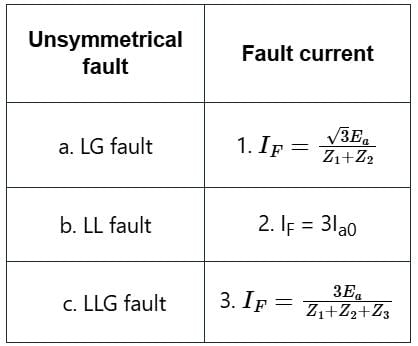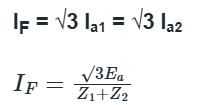Electrical Engineering (EE) Exam > Electrical Engineering (EE) Tests > Test: Fault Analysis - Electrical Engineering (EE) MCQ
Test: Fault Analysis - Electrical Engineering (EE) MCQ
Test Description
10 Questions MCQ Test - Test: Fault Analysis
Test: Fault Analysis for Electrical Engineering (EE) 2025 is part of Electrical Engineering (EE) preparation. The Test: Fault Analysis questions and answers have been prepared
according to the Electrical Engineering (EE) exam syllabus.The Test: Fault Analysis MCQs are made for Electrical Engineering (EE) 2025 Exam.
Find important definitions, questions, notes, meanings, examples, exercises, MCQs and online tests for Test: Fault Analysis below.
Solutions of Test: Fault Analysis questions in English are available as part of our course for Electrical Engineering (EE) & Test: Fault Analysis solutions in
Hindi for Electrical Engineering (EE) course.
Download more important topics, notes, lectures and mock test series for Electrical Engineering (EE) Exam by signing up for free. Attempt Test: Fault Analysis | 10 questions in 30 minutes | Mock test for Electrical Engineering (EE) preparation | Free important questions MCQ to study for Electrical Engineering (EE) Exam | Download free PDF with solutions
Detailed Solution for Test: Fault Analysis - Question 1
Detailed Solution for Test: Fault Analysis - Question 2
Detailed Solution for Test: Fault Analysis - Question 3
Detailed Solution for Test: Fault Analysis - Question 4
Test: Fault Analysis - Question 5
Irrespective of the causes, which is the fault in a 3-phase system?
Detailed Solution for Test: Fault Analysis - Question 5
Test: Fault Analysis - Question 6
On which among the following factors does the magnitude of the fault current depend?
Detailed Solution for Test: Fault Analysis - Question 6
Test: Fault Analysis - Question 7
Possible faults may occur on a transmission line are
1. 3-phase fault
2. L-L-G fault
3. L-L fault
4. L-G fault
The decreasing order of severity of the faults from the stability point of view is:
Detailed Solution for Test: Fault Analysis - Question 7
Test: Fault Analysis - Question 8
A transformer is rated at 11 kV/0.4 kV, 500 KVA, 5% reactance. What is the short circuit MVA of the transformer when connected to an infinite bus?
Detailed Solution for Test: Fault Analysis - Question 8
Detailed Solution for Test: Fault Analysis - Question 9
Test: Fault Analysis - Question 10
A transformer is rated at 11 kV/0.4 kV, 500 KVA, 5% reactance. What is the short circuit MVA of the transformer when connected to an infinite bus?
Detailed Solution for Test: Fault Analysis - Question 10
Information about Test: Fault Analysis Page
In this test you can find the Exam questions for Test: Fault Analysis solved & explained in the simplest way possible.
Besides giving Questions and answers for Test: Fault Analysis, EduRev gives you an ample number of Online tests for practice
Download as PDF

























